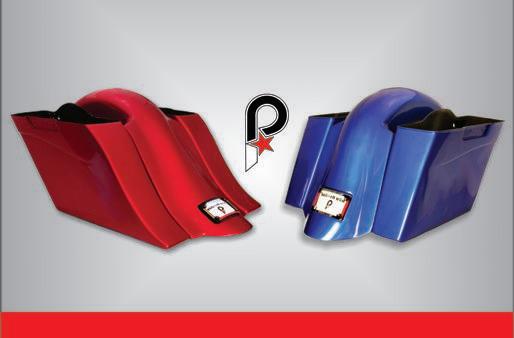
2 minute read
MOTORCYCLE FIRST AID!
Spend enough time in a motorcycle shop and you’ll see it all. If you’re the guy holding the wrenches, you’ve probably been asked to fix it all too. That’s been true with the team at Speed’s Performance Plus. They’ve brought their mobile motorcycle shop to events big and small going on two decades now, crisscrossing the country coast to coast. They’ll hit the road in March and won’t call it quits until November, and during those travels they’re called upon by thousands of riders to make sourrunning Harleys sweet and stronger.

Advertisement
During those event-stops the SPP worktables will be filled with bikes getting the regular performance treatments, cam swaps, and big-bore kits, and they’ll be prepped for sessions on the dyno. But alongside all that will be the riders who have nursed their wheezing, sputtering bikes up to the shop looking for help. “And sometimes,” SPP’s Jamie Hanson says, “it’ll be a quick fix, something so simple we get that guy back into the action fast. Other times we have to be the bearer of bad news, telling a rider he’s got serious problems.” Naturally, the first diagnosis is preferable to the second, and, thankfully, it’s most often the case.
What are those common complaints?
Rideability, first and foremost. “But it’s usually caused by something pretty obvious,” Jamie says. “The kind of thing a rider might miss but a fresh set of eyes will pick up.” Fouled spark plugs or cracked, deteriorated plug wires, for instance. Too simple?
You’d be surprised how often the SPP guys run into this. Clogged filters too. But a rideability problem caused by a battery or charging system not quite up to snuff might be a little less obvious. No less common, though, and a weak battery or alternator can lead to all sorts of grief, especially with the complexity of a modern Harley’s EFI system. Those computer-controlled sensors and switches need peak voltage to operate as designed. Not getting it can result in intermittent misfires, overall rough running, surging, erratic idling, and a host of other maladies. The addition of high-powered audio systems and amplifiers and banks of extra lighting won’t help this situation. Any poor-performing bike with an early 22- or even 32-amp charging system might be a candidate for an alternator upgrade and a stronger battery.
Leaking gaskets and seals are another common cause of performance woes. “We see worn, cracked, or misaligned throttle body and manifold seals all the time,” Jamie says. The resulting air leak will throw any bike’s air/fuel mixture totally out of whack. More than just the source of lousy running, that extra-lean condition can lead to all sorts of bigger problems, a seriously overheated engine being one. And on the subject of gaskets and loose seals you’d be surprised at how often the Speed’s team has to tighten up a bike’s exhaust. “Sometimes those pipes are just about falling off,” they say. And sometimes those pipes are just plain wrong, at least from a performance and rideability standpoint.
Bikes with short, large-diameter, wide-open pipes chosen for looks and sound don’t always perform so well on the street. Their happy range is up top, at wide-open throttle. Anything below that and it’s a safe bet there are concerns. Can anything be done to improve the street manners here, short of switching to a 2-into-1? Maybe. “The first step,” Jamie says, “is to put the baffles back in if they’ve been removed.” The low- and midrange performance difference between baffled and un-baffled drag pipes can be significant, as much as 15 poundfeet of torque or more right at the bottom end where it’s needed most. In cases where the pipe was supplied without a baffle, SPP can install their own—a “Power Cone” to create that little bit of backpressure needed to produce torque and aid rideability.
All of this is just a glimpse into some of what the Speed’s Performance Plus team sees on a daily basis, the problems described, and fixes prescribed. Have a particularly vexing situation of your own? Maybe a fresh set of eyes and an experienced set of hands can help. Next time the SPP crew is in the area, perhaps roll your bike onto one of their first-aid lifts too. HB











